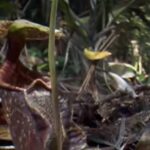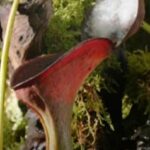As an Amazon Associate, this site earns commissions from qualifying purchases. For more details, click here.
Pitcher plants are fascinating carnivorous plants known for their unique tubular leaves that trap and digest insects. These plants have adapted to thrive in nutrient-poor environments by obtaining essential nutrients from their prey. Found in various regions across the world, pitcher plants have evolved to survive in diverse climates and habitats.
Geographical Distribution
Pitcher plants belong to different genera, each with a distinct geographical distribution. The three main genera of pitcher plants include Sarracenia, Nepenthes, and Darlingtonia.
1. Sarracenia (North American Pitcher Plants)
Sarracenia species are predominantly found in North America, particularly in the southeastern United States. These plants thrive in bogs, swamps, and wetlands, especially in states like Florida, Georgia, Alabama, and Louisiana. Some species extend further north into Canada, such as Sarracenia purpurea, which can withstand colder climates.
2. Nepenthes (Tropical Pitcher Plants)
Nepenthes species are primarily found in Southeast Asia, including countries such as Malaysia, Indonesia, the Philippines, Thailand, and Borneo. These tropical pitcher plants flourish in rainforests and mountainous regions, often growing on trees or rocky surfaces. Some species, such as Nepenthes rajah, are known for their enormous pitchers capable of trapping small animals like rodents and frogs.
3. Darlingtonia (California Pitcher Plant or Cobra Lily)
The genus Darlingtonia consists of a single species, Darlingtonia californica, which is native to North America. This plant is primarily found in Oregon and northern California, growing in nutrient-deficient, acidic soils near cold mountain streams and boggy areas. The plant’s hooded pitcher and forked structure resemble a cobra, giving it the common name “cobra lily.”
Habitats and Growing Conditions
Pitcher plants typically thrive in environments with high humidity, acidic soil, and nutrient-poor conditions. Some common habitats include:
- Bogs and wetlands – Common for Sarracenia and Darlingtonia.
- Rainforests and high-altitude regions – Home to many Nepenthes species.
- Swamps and marshes – Where waterlogged, acidic soils provide the right conditions.
- Mountain streams and seepages – Preferred by Darlingtonia californica.
Conservation Status
Many pitcher plant species face threats due to habitat destruction, climate change, and illegal poaching. Conservation efforts are crucial to preserving their natural environments, and several species are protected under conservation programs worldwide.
Conclusion
Pitcher plants are found across different continents, from the wetlands of North America to the tropical forests of Southeast Asia. Their unique adaptations make them a remarkable example of nature’s ingenuity in survival. Whether growing in the dense rainforests of Borneo or the bogs of Florida, pitcher plants continue to captivate botanists and plant enthusiasts alike.

My fascination with carnivorous plants began many, many years ago with Venus Fly Traps. Now I am more than happy to impart what I know with other enthusiasts and those who are curious about meat eating plants.


